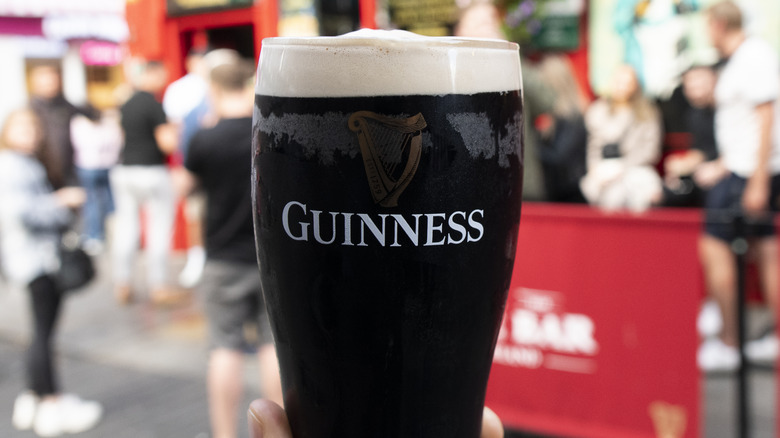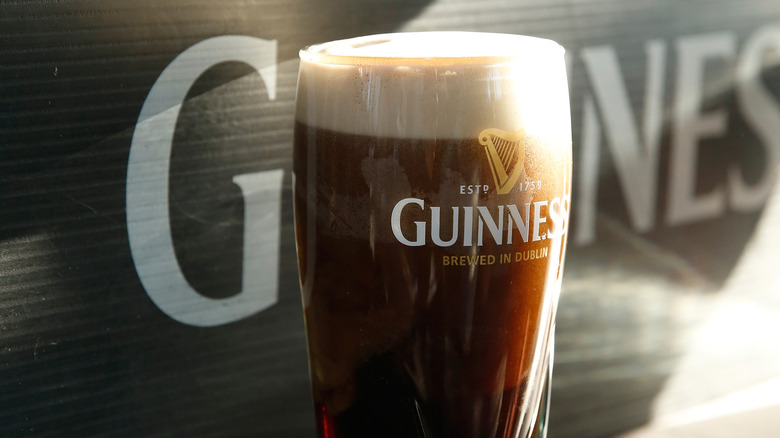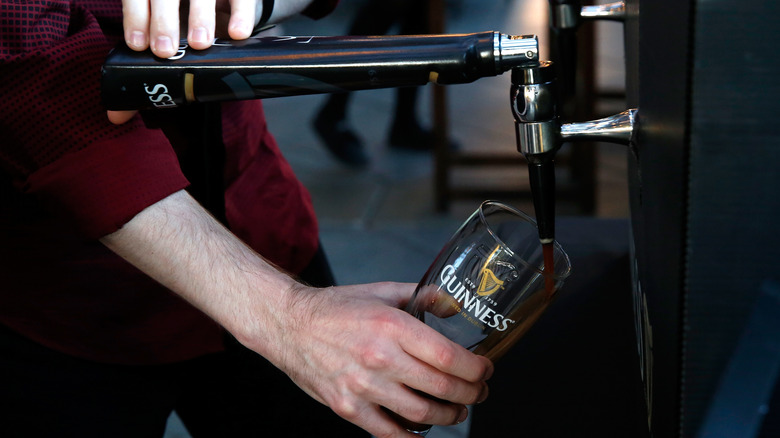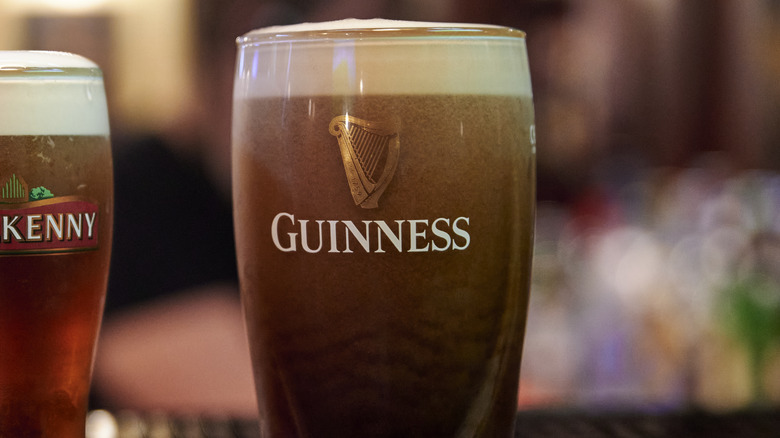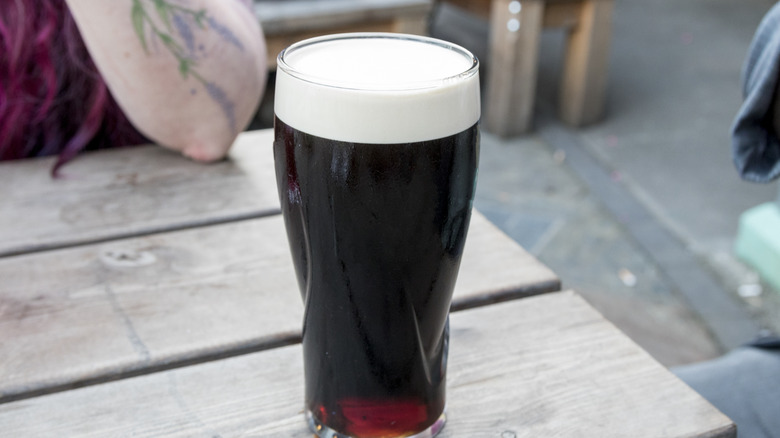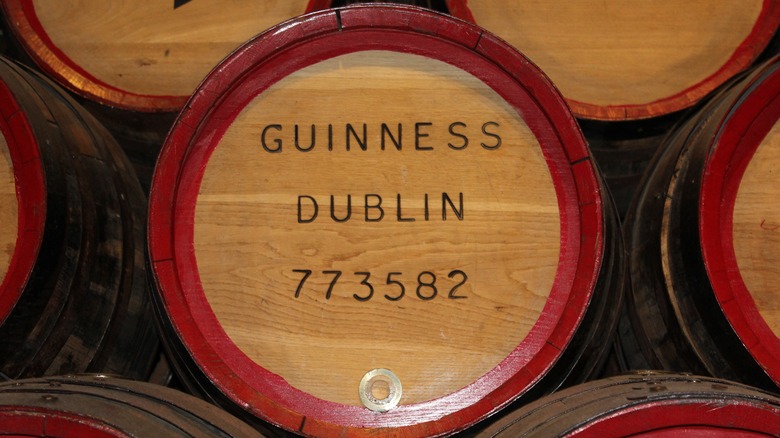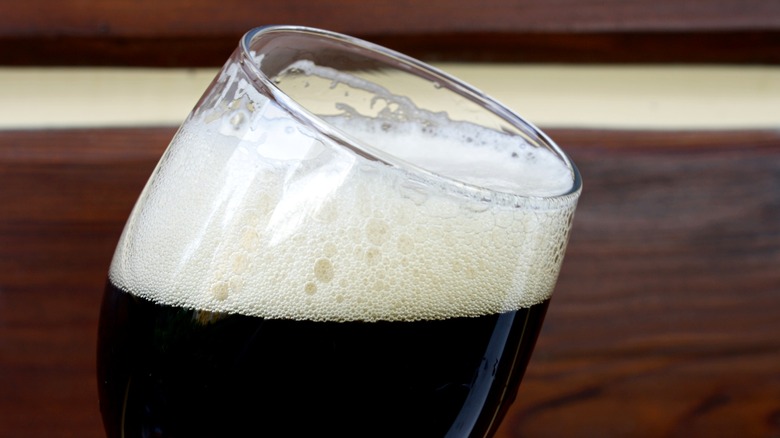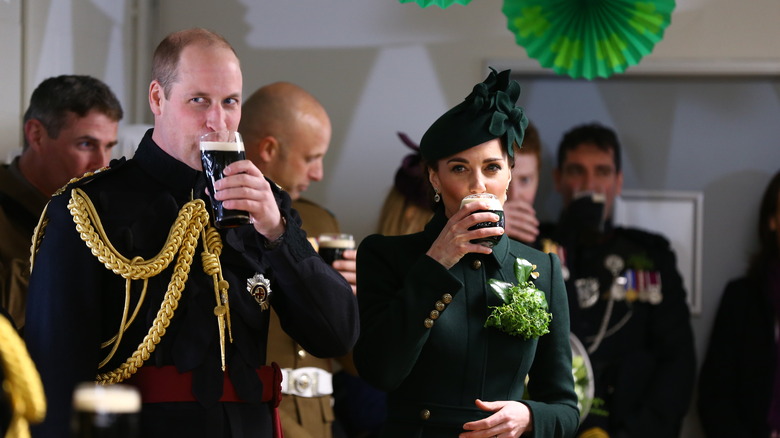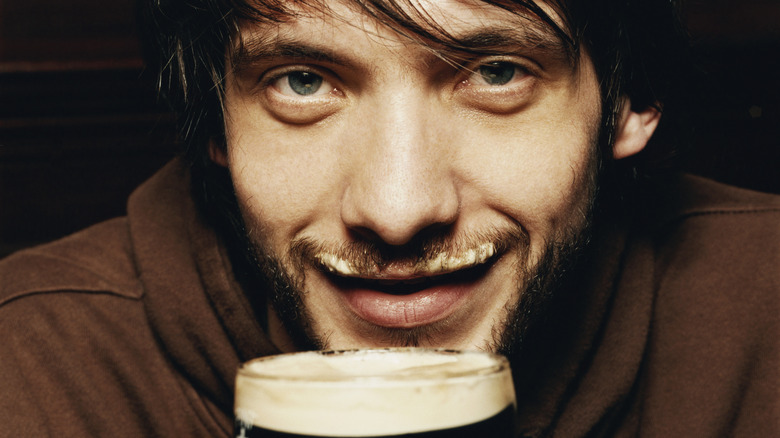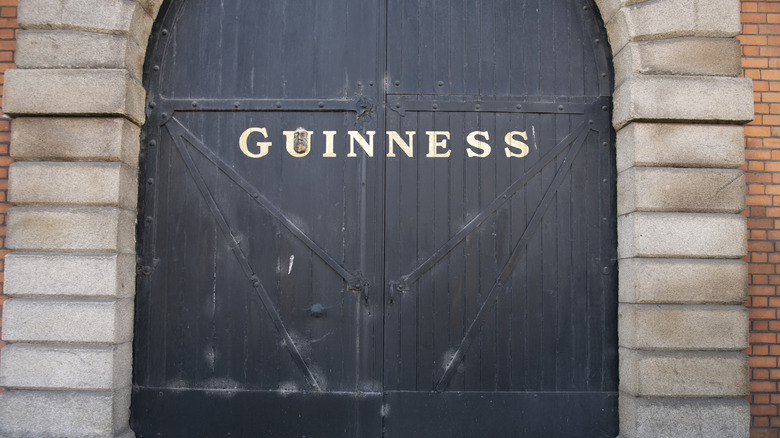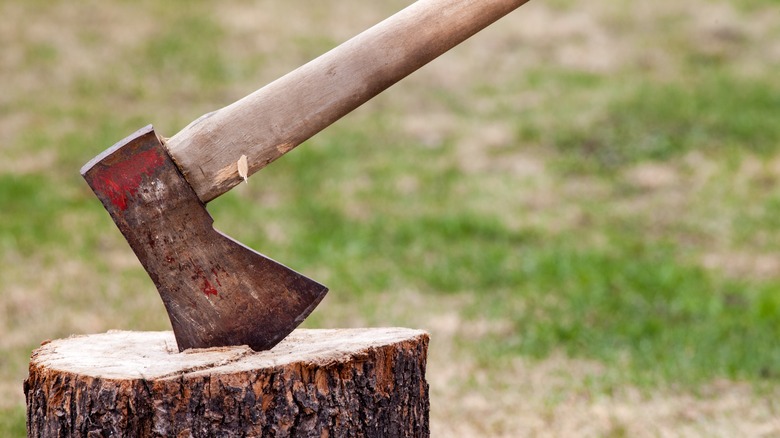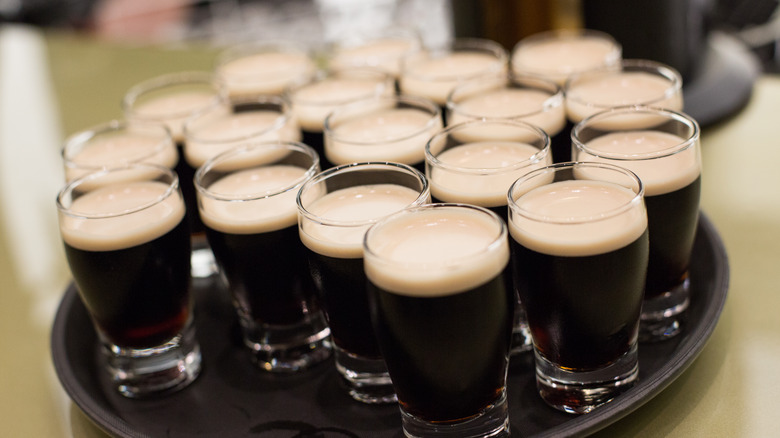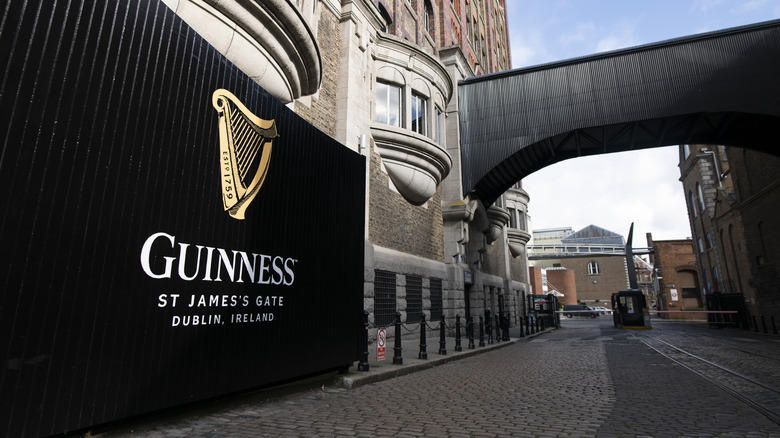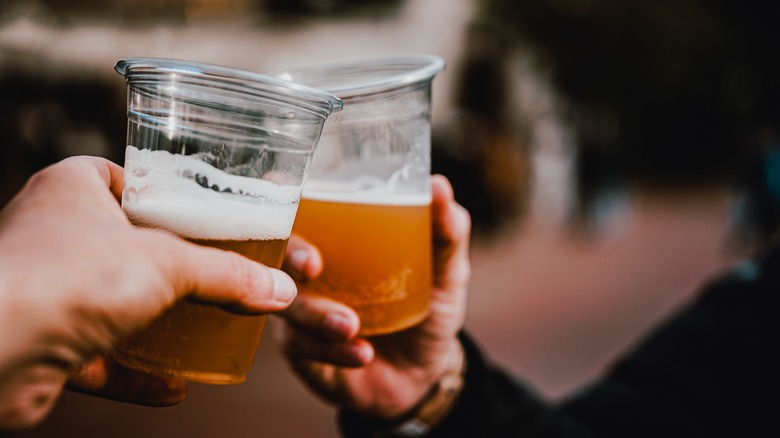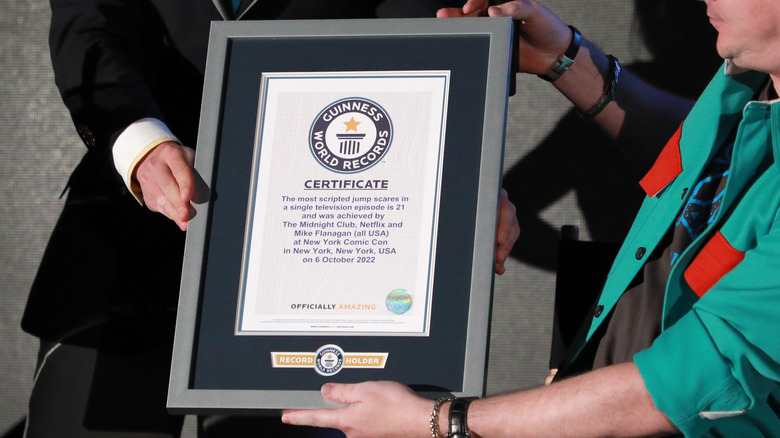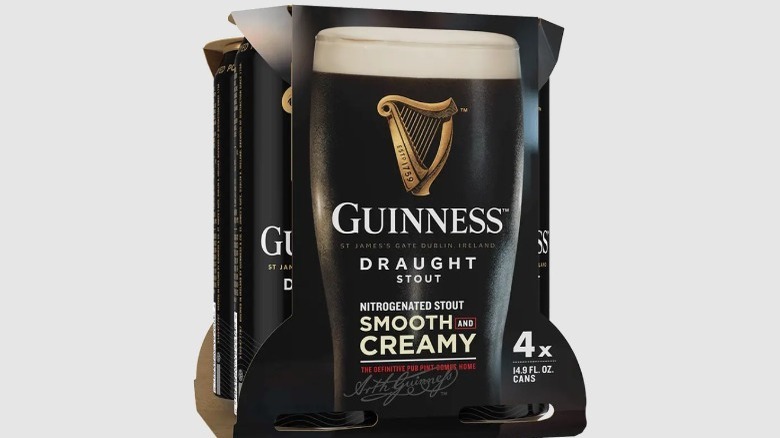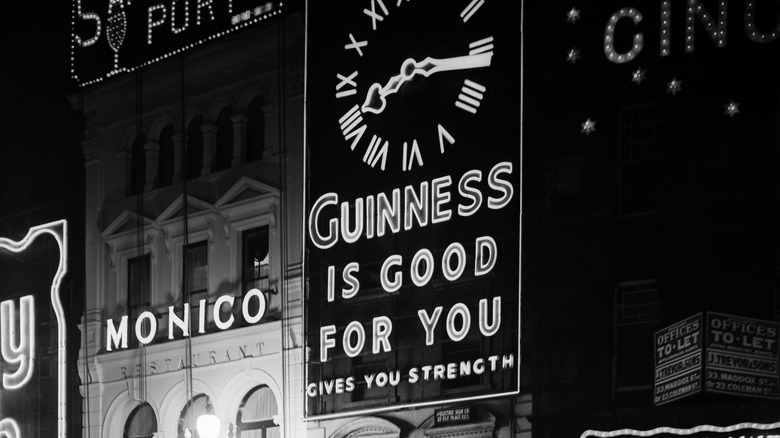17 Things We Know About Guinness
Guinness is the king of Irish beers. Centuries after it first launched in Dublin, it has become a staple of the bar scene in more than 150 countries worldwide. Across the pond in the U-S-of-A, it's hard to go anywhere without seeing the beloved dry stout on tap — but nobody's mad about that.
We're all familiar with the distinctively dark, rich, and creamy brew, and although it's enjoyed any day of the year, it's practically synonymous with St. Patrick's Day. But there's more than meets the palate when it comes to one the world's favorite beers. Read on to discover 17 things you didn't know about Guinness.
It's ruby red, not black
Guinness Draught, the brewery's most famous beer, is often referred to as "that black stuff," which doesn't really sound all that appealing. It's not actually black, though, or even dark brown. It's ruby red. According to the company, the roasted barley gives it color, which is easier to see if you hold your pint to the light.
It has to be poured a special way
Guinness has implemented a very specific set of directions for pouring the perfect pint, and it's honored at practically every bar globally. With the glass at a 45-degree angle, fill the pint three-quarters of the way. Let everything settle for 119.5 seconds and then top it off by pushing the tap backwards. The two-part pour is supposed to create a thick head that domes over the top, but does not spill.
That 'perfect pour' stuff may actually be nonsense
The unique method is likely just a marketing gimmick, and many surmise the whole process only delays you from getting your drink. So where'd it all start? When Guinness switched from wooden to metal casks in the 1950s, customers apparently needed convincing that the beer would still taste as good, so the company created this seemingly distinguished ritual to make drinkers feel special. But some say it's necessary to maintain because without the two-part pour, they presume the creamy head will deplete.
It was the first beer to use nitrogen
In every pint of Guinness, there are 300,000 super small bubbles filled with carbon dioxide and nitrogen. This gives the beer a silky smooth texture and especially creamy head. If you look closely, you can see that the bubbles are falling instead of rising. A lot of beers incorporate nitrogen into their recipes today. It's even been adopted in soda and cold brew coffee.
It was originally supposed to be an ale
When founder and original brewer Arthur Guinness first started making beer, he brewed ale. After realizing that the porter style developed in London had become increasingly popular, he scrapped the ale and focused on dark beer instead.
It's pretty low in calories
One 12-ounce serving of Guinness will set you back 125 calories, which is only 15 calories more than a Bud Light.
Brits are the world's biggest consumers
Ten million glasses of Guinness are enjoyed every day around the world, but its biggest drinkers aren't in the homeland. Most is sold in neighboring Great Britain, followed by Ireland, Nigeria, the United States, and Cameroon.
You're wasting beer if you have a mustache
According to this study in the U.K., drinkers with mustaches waste an estimated 162,719 pints — or a pint and a half per 'stache — annually because it gets trapped in their facial hair. The average price of a pint in London and Dublin is £4.45, which equates to about $5.83. That means $948,651.77 in Guinness is unintentionally wasted each year.
Guinness signed a majorly long lease
Arthur Guinness signed a 9,000-year lease for the St. James' Gate Brewery in Dublin on December 31, 1759. The rental agreement required a down payment of £100 and an annual installment of £45. The company eventually purchased the land outright.
Arthur Guinness almost slashed someone with an axe
Sixteen years after the lease began, the Dublin Corporation (the city government) demanded that Guinness pay for the spring water flowing to the brewery from nearby mountains. The founder argued that the H2O was included in his lease, so the city sent the sheriff and a small committee to cut off the supply. That's when Arthur Guinness grabbed an axe. Nobody was hurt, but Guinness stood his ground and consequently got to keep his rights to the water with no extra fees.
There was a short-lived holiday in Arthur Guinness' honor
On September 24, 2009, at 17:49 (5:59 p.m.), 50 million people around the world raised a toast to the memory of Arthur Guinness. The time is a nod to 1759 when the brewery was founded and this celebration marked its 250th year. Partygoers must've gotten a smidge too rowdy, though, because the holiday ceased to exist after the last hurrah in 2013.
It's sold in 150 different countries
Guinness is brewed in 49 countries and sold in more than 150. The beer brand owns five breweries in five countries around the world including Ireland, Malaysia, Nigeria, Ghana, and Cameroon.
It was one of the first-ever trademarked products
In the 19th century, the company came up with a trademark-protected label to protect the Guinness name overseas. This included the signature of Arthur Guinness and a harp on the beer's label. The harp is the same one that appears on Ireland's coat of arms, except it faces the opposite direction.
Counterfeiters were publicly shamed
In the early days, Guinness did not bottle its own beer. Instead, it shipped booze-filled casks to pubs, which filled their own bottles with customized labels. Sometimes pub owners sold fake Guinness though, so the company sent secret shoppers to collect beer samples for testing. If a bar was busted, the owner had to give a public apology in local and/or national newspapers.
It funds the Guinness Book of World Records
In the early 1950s, Guinness managing director Sir Hugh Beaver went on a hunting trip, where he and his colleagues got into an argument about the fastest game bird in Europe. Nobody could find the answer in reference books, so it was decided that the company would compile a book of facts and figures to settle trivia quarrels in pubs once and for all.
That ball in the can has a purpose
In 1989, Guinness began selling its beer in cans. The tiny plastic ping pong ball you feel rattling around in there is a "widget" filled with nitrogen. When the can is opened, the gas surges out through the beer, creating the same creamy head you'd get if it were poured on draft at the pub.
'Guinness is good for you'
For nearly 40 years starting in the 1920s, the company's slogan was "Guinness is good for you." It was believed that the beer had medicinal properties and doctors even recommended it to their patients. New mothers in Irish hospitals were reportedly given Guinness after giving birth because the beer's high iron content was deemed useful for recovery. That obviously wouldn't fly today, but some studies show that drinking beer might actually be beneficial to your health.
